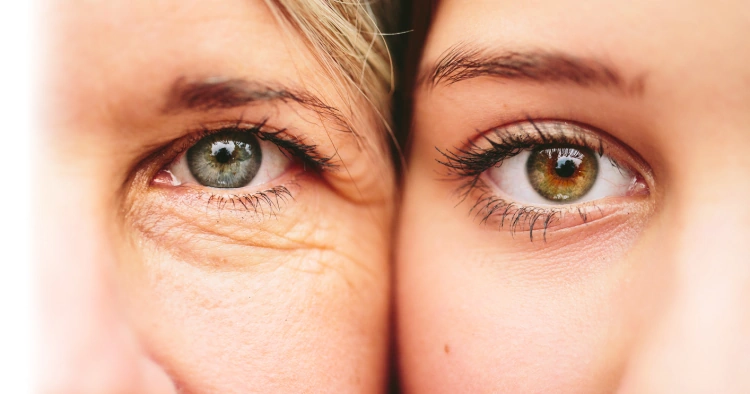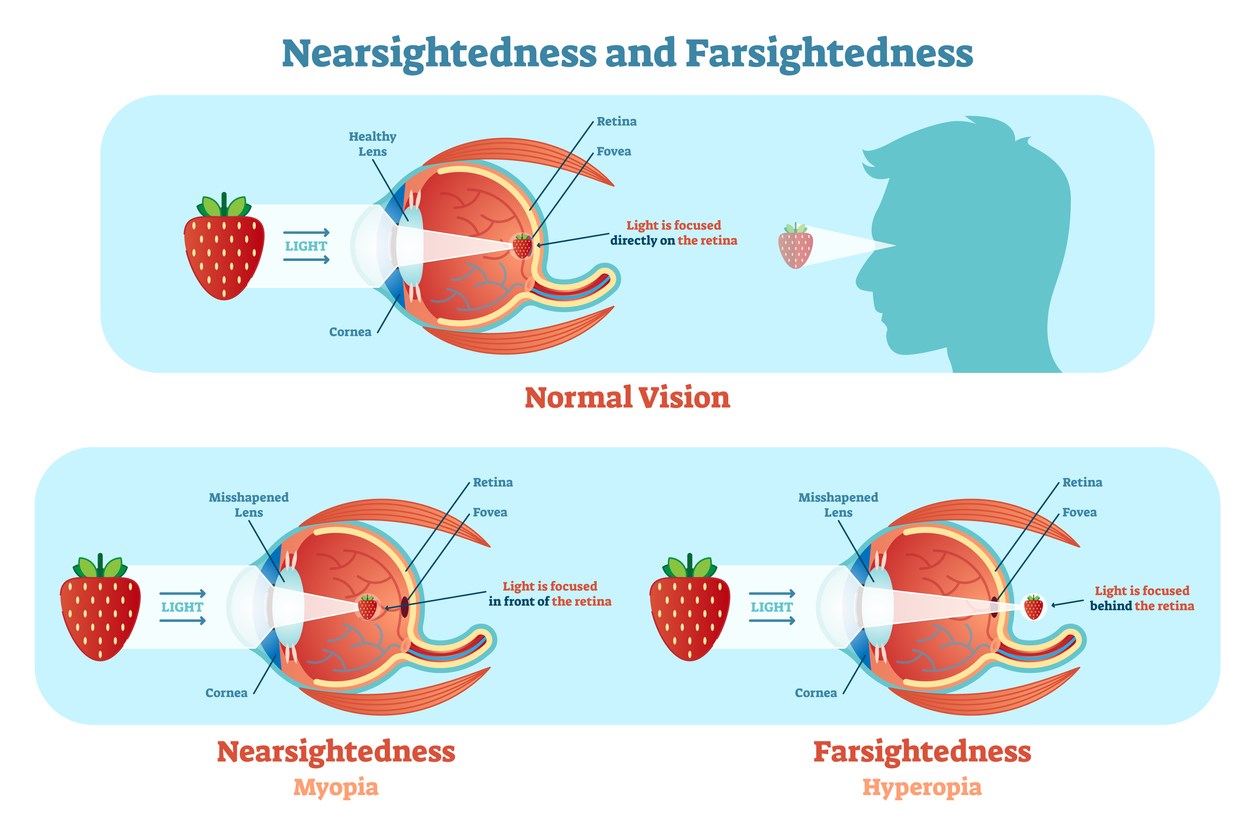What is Hyperopia?
22 February 2019

Hyperopia is a refractive error, most commonly known as farsightedness or long-sightedness. In medical terms, this is referred to as hyperopia or hypermetropia.
People who are farsighted will have trouble focusing on objects that are close up, such as mobile phones, books and tablets; whereas objects that are in the distance are seen clearly.
What are the symptoms of hyperopia?
- Blurred vision when looking at something close up, such as a computer screen.
- The need to squint when trying to focus on something close up.
- Eye ache in and around the eyes.
- Headaches when performing close-up tasks, such as reading.
What causes hyperopia?
Farsightedness (hyperopia) occurs when the cornea is too flat. This causes incoming light rays to focus behind the retina instead of directly on it; in turn resulting in blurry vision when the eye tries to focus on something close-up. 
In order to see an object, light rays need to enter the eye through the cornea (outer layer of the eyeball). The cornea then bends these light rays, so they can pass through the pupil.
The rays then pass through the lens (transparent structure behind the iris), which shortens or lengthens its width to further bend the rays and focus them on to the retina (light-sensitive tissue lining the back of our eye). In a ‘healthy’ eye the light rays will meet at a focusing point on the retina.
The retina’s function is to send these light rays through millions of nerve endings to the optic nerve, where they are converted into vision signals. These vision signals are transferred to the brain and voila! The brain transforms the signals into objects that we see.
What you might not know is that most children are farsighted, but see close objects clearly because of their ability to bend light rays and place them directly on to the retina. Farsighted children are usually not a cause for concern, as the severity will generally lessen as the eye develops.
How is hyperopia diagnosed?
Like all visual impairments, farsightedness can be easily identified during a routine eye test; which is recommended at least every two years to keep your eyes happy.
There are of course visual aids such as glasses and contact lenses that can help people with farsightedness see more clearly, however these often accompany drawbacks.
Surgery to correct farsightedness is a common alternative. Ultralase has extensive experience with fixing farsightedness with a number of different procedures.
What treatments are available to correct hyperopia?
Ultralase offers several procedures which can correct hyperopia. These include:
Back to Blog
